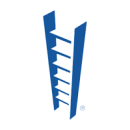Product team structure means a lot for success — but how can tech companies know if the “functional” or “general manager” model is the best method for their business?
Functional models ensure that the product and engineering teams are kept separate, and that each is centralized under different leadership, such as a chief product officer (CPO) and a chief technology officer (CTO). One of the critical factors in this model is that both the product and engineering teams are considered equals, and it’s imperative that they work well together, or tensions may arise.
If collaboration is strong, then this model is great for developing deep expertise, rare levels of synergy and efficient scaling methods.
The general manager model is quite different, as in this case GMs own both product and engineering resources dispersed across business units, and are responsible for the overall business outcomes. The good news for this method? It’s a great benefit for tech companies trying to boost agility, nimbleness or success in a particular niche.
To learn more, Built In LA sat down with Rick Hariman, executive vice president and chief information officer at City National Bank. His expertise and advice on the functional and general manager models should be a boon to tech companies looking for structural guidance going forward.
Would you say that your product organization follows a functional structure, or more of a “general manager” model? Why does that make sense for your team?
City National Bank’s Technology and Innovation’s product-centric model is based on a functional structure, where the product teams are aligned to a specific division and its products. A dedicated technology group operating in an agile manner makes up each of these groups, creating a close working partnership with the business.
We found this model to be ideal for our organization in order to enable our goal in achieving deeper knowledge and understanding of the business and its products. Having dedicated resources for each functional area allows our technology colleagues to become strategic partners with the business and develop the optimal technology to meet its business goals.
Having dedicated resources for each functional area allows our technology colleagues to become strategic partners with the business.”
What are the potential drawbacks of structuring your product organization in this way, and how do you mitigate them?
Creating consistent, repeatable and scalable processes are critical in our efforts to become a simple, modern and scalable organization. Creating standards across all verticals, business needs and technology is a challenge, and our horizontal platform teams are in place to create our enterprise standards and support enterprise activities.
Additionally, we created “technology guilds” to bring together colleagues from verticals and horizontals to align and share knowledge, build best practices and take our enterprise standards and apply them to their functional product teams. We have seen a lot of collaboration and success in leveraging capabilities across the verticals as well.
How does your product organization structure set individual engineers and other contributors up for career growth over the long term?
Our technology guilds help us focus on expanding existing capabilities and creating new functionalities as part of our organizational development. These communities of technical experts from across our enterprise support teams (horizontal teams) and functional product teams (verticals) allow us to build knowledge and new solutions that can be leveraged by all colleagues. This includes creating a curriculum for continuous learning and sharing best practices.
These capabilities can be leveraged across any functional team, creating opportunities not only for leadership, but mobility across various areas of the organization to support growth and deepen knowledge of the business and various products.






